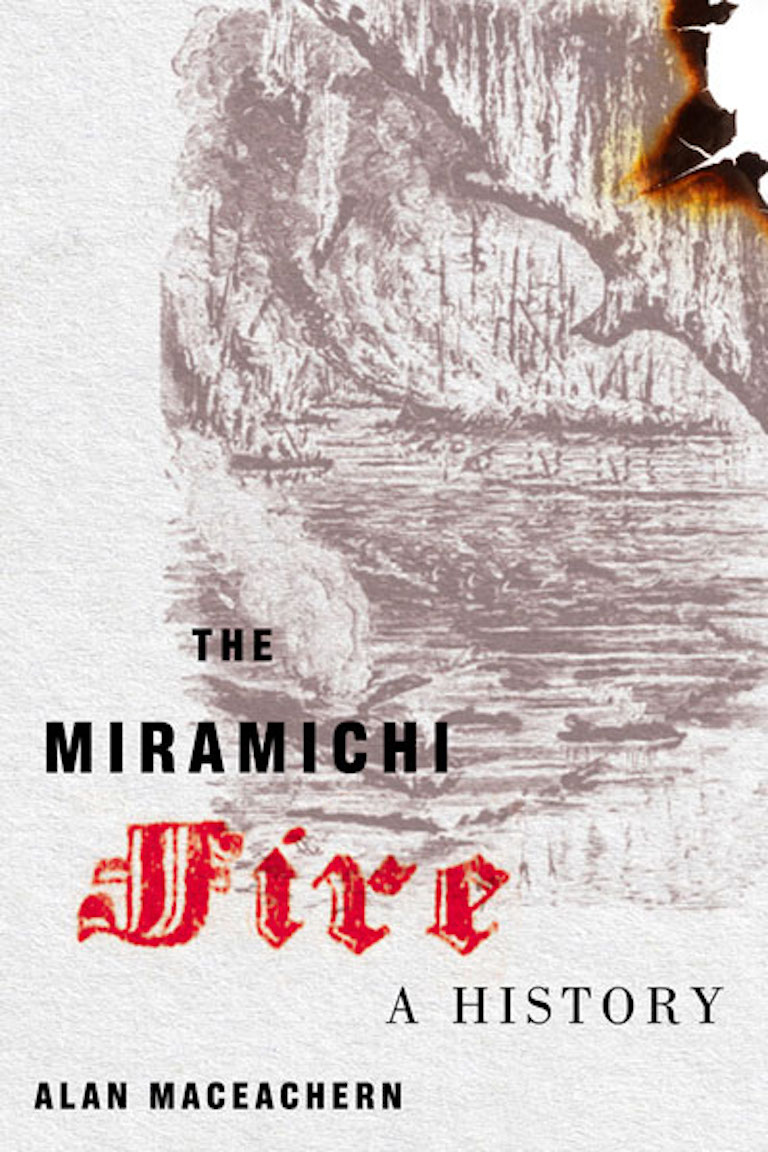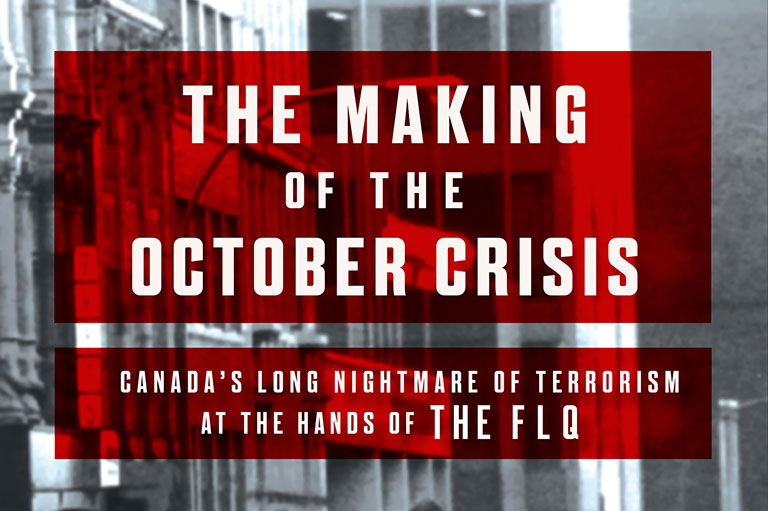The Miramichi Fire

The Miramichi Fire: A History
by Alan MacEachern
McGill-Queen’s University Press,
296 pages, $34.95
“Suddenly, a lengthened and sullen roar came booming through the forest, and driving a thousand massive and devouring flames before it,” recalled Robert Cooney. Another startled eyewitness, Isaac Paley, likened the conflagration to being caught in “the center of a volcano during an eruption.” They could have been describing recent wildfires in California, Australia, or British Columbia, but this inferno raged almost two centuries ago on Canada’s East Coast.
In The Miramichi Fire: A History, University of Western Ontario historian Alan MacEachern explores the origins and legacy of one of the largest forest fires ever recorded. The October 1825 disaster blackened an estimated fifteen thousand square kilometres of forest in northeastern New Brunswick. At least 160 people died, and thousands were left homeless, as fire swept through lumber camps and settlements on both sides of the Miramichi River.
Buildings and livelihoods disappeared in seconds. Embers set fire to ships at anchor. Terrified survivors fled to marshes — areas too wet to burn — and clung to rafts or plunged into the river to escape the flames and searing heat.
Remarkably, this is the first book to chronicle one of the worst disasters of the nineteenth century. MacEachern has painstakingly assembled news reports and other accounts of the fire, and he relies on witnesses like Paley, Cooney, and other observers from that time to gauge its scale and impact — and to separate fact from fiction. Embellishments and exaggerations crept in as the story was retold or was reduced to brief mentions in history books.
There is human drama here. Many residents were recent immigrants who had never experienced a forest fire and did not recognize the smoke rising from deep in the woods as a signal to flee. Shipbuilder William Abrams and his wife, Sarah, escaped their home before it was razed; but their two children, both under the age of three, were badly burned and did not survive. John Jackson worked feverishly to drape wet blankets on the roof of a church, thereby saving the building, but only to discover that the fire had destroyed his house and that his wife and three of his children were dead; three more died of their injuries soon afterwards.
MacEachern launches the book with a description of his visit to the cemetery where an oversized headstone records Jackson’s unimaginable loss. But his focus is on the fire and its impact — as well as the lessons and warnings for our time of climate crisis.
The cause of the fire was never determined and, at this distance in time, is unknowable. A lumbermen’s campfire or a lightning strike may have been the culprit. But extreme weather of the kind that has become all-too-common ensured the fire’s apocalyptic size and rapid spread. A prolonged heat wave in eastern North America had spilled into the fall of 1825; by that October, the region’s parched forests were baking under what one newspaper termed “the burning sun of a second summer.” With even one spark, hurricane-strength winds were enough to do the rest.
MacEachern is a reliable and sometimes entertaining narrator as he pops into the story here and there with asides, interpretations, and explanations. A chapter focused on the spread and extent of the fire is playfully entitled “Leafs vs Flames.” While this is serious academic history delivered with the gravitas the subject deserves, such devices help the author to engage readers as he presents his analyses and findings.
And there is a message for residents of Eastern Canada, a region that has recently been spared disasters such as the Fort McMurray, Alberta, fire of 2016: Rising temperatures mean less forest diversity and trees that face further onslaughts of insects and disease. MacEachern warns us that “we may be blind to the change that is coming and is already here” — as blind as the victims of the 1825 Miramichi Fire.
Themes associated with this article
Advertisement
With 7 uniquely curated newsletters to choose from, we have something for everyone.




